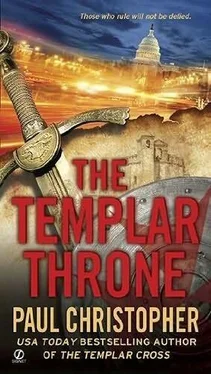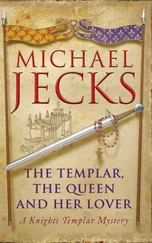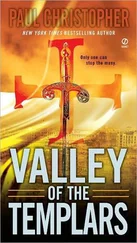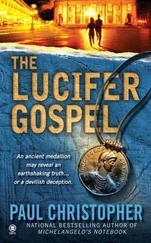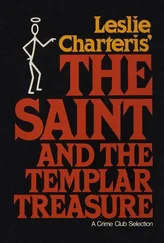Paul Christopher - The Templar throne
Здесь есть возможность читать онлайн «Paul Christopher - The Templar throne» весь текст электронной книги совершенно бесплатно (целиком полную версию без сокращений). В некоторых случаях можно слушать аудио, скачать через торрент в формате fb2 и присутствует краткое содержание. Жанр: Триллер, на английском языке. Описание произведения, (предисловие) а так же отзывы посетителей доступны на портале библиотеки ЛибКат.
- Название:The Templar throne
- Автор:
- Жанр:
- Год:неизвестен
- ISBN:нет данных
- Рейтинг книги:4 / 5. Голосов: 1
-
Избранное:Добавить в избранное
- Отзывы:
-
Ваша оценка:
- 80
- 1
- 2
- 3
- 4
- 5
The Templar throne: краткое содержание, описание и аннотация
Предлагаем к чтению аннотацию, описание, краткое содержание или предисловие (зависит от того, что написал сам автор книги «The Templar throne»). Если вы не нашли необходимую информацию о книге — напишите в комментариях, мы постараемся отыскать её.
The Templar throne — читать онлайн бесплатно полную книгу (весь текст) целиком
Ниже представлен текст книги, разбитый по страницам. Система сохранения места последней прочитанной страницы, позволяет с удобством читать онлайн бесплатно книгу «The Templar throne», без необходимости каждый раз заново искать на чём Вы остановились. Поставьте закладку, и сможете в любой момент перейти на страницу, на которой закончили чтение.
Интервал:
Закладка:
Not for a minute did he consider failing, nor did he think about the enormity of the initial act he'd been hired to complete. He never failed; he never made mistakes. Remorse was an emotion that was unknown to him. Some people would have called him a sociopath, but they would have been wrong. He was simply a man with a singular talent, and he practiced it with enormous efficiency. He left the motive and morality of his task entirely in the hands of his employers. In his own mind he was nothing more than a technician-a facilitator of the needs of the people who hired him.
Hancock made his way down the Corso Vittorio Emanuele II in the lightly falling snow. He glanced at his watch. It was six thirty in the morning, and it was still dark. Sunrise would be in an hour and four minutes. He still had plenty of time. He was wearing a white ski jacket purchased in Geneva, blue jeans from a vintage clothing store in New York, and high-top running shoes from a store in Paddington, London. He had a pale gray backpack slung over his shoulder and tucked under his arm was a long, Christmas-paper-wrapped box of the kind usually used for long-stemmed roses. On his head, covering his dark hair, he wore a white balaclava ski hat rolled up into a watch cap.
He'd seen virtually no one on his walk, except for a few taxi drivers, and the steel shutters were pulled down over the entrances to the cafes, bars and small pizzerias along the way. Partly it was the unfamiliar snow on the ground, and partly it was the day. Most people would be at home with loved ones, and the more pious would be preparing breakfast before heading out to St. Peter's Square for the Apostolic Blessing from the Pope, scheduled for noon.
Hancock reached the Via Dei Filippini and turned into the narrow alley. Cars were angle-parked along the right-hand side, the only spaces available for the large nineteenth-century apartment block on the left. Hancock's own little DR5 rental was where he'd left it the night before. He continued down the alley until he reached an anonymous black door on the right. Using the old-fashioned key he'd been provided, he unlocked the door and stepped inside.
He found himself in a small, dark foyer with a winding iron staircase directly in front of him. He began to climb, ignoring several landings, and finally reached the top. A stone corridor led to the right, and Hancock followed it. The passage took several turns and ended at one of the choir lofts.
He looked down into the central part of the church, eighty or ninety feet below. As expected, it was empty. Most churches in Rome, big and small, would be vacant this morning. Every worshipper in the city was hurrying to St. Peter's in time to get one of the good spots close to the main loggia of the church, where the Pope made his most important proclamations.
There was a narrow door at the left side of the choir loft. Opening it, Hancock was faced with a steep wooden staircase with a scrolled banister. He climbed the steps steadily until he reached the head of the stairs and the small chamber at the top. The floor of the chamber was made of thick Sardinian oak planks, black with age, and the walls were a complex mass of curving struts and beams of the same wood, much like the skeletal framework of a ship from the Spanish Armada, which was not surprising since the framework was built by the best Italian shipwrights from Liguria in the late sixteenth century.
The framework supported the heavy outer masonry dome and allowed the much lighter inner dome to be significantly taller than was normally seen in churches built at that time. A simple wooden staircase with banisters on both sides soared upward, following the dome's curve and ending at the foot of a small round tower steeple that capped the dome.
Hancock climbed again, reaching the top of the dome, and then went up a narrow spiral staircase into the tower. He checked his watch. Still forty minutes until the sun began to rise. He dropped the heavy parcel and shrugged off the backpack. The trip from the outer door on Via Dei Filippini to the tower had taken him eleven minutes. By his calculations the return journey would take no more than seven minutes since he would be going down rather than up and he'd no longer be carrying the extra weight.
Before doing anything else, Hancock took out a pair of surgical gloves and snapped them on. He opened the flap on the backpack and took out a wax-paper-wrapped fried-egg sandwich and ate, quickly and methodically making sure that no crumbs fell on the stone floor at his feet. As he ate, he looked out over the city. The snow was coming down more heavily now, easily enough to cover his tracks down the alley to the access door but not so heavily as to obscure vision. He finished the sandwich, carefully folded the waxed paper and slipped it into the pocket of his ski jacket.
He set the alarm on his watch for eleven thirty, pulled the masklike balaclava over his face to conserve heat and slid down to the floor. Within three minutes he had fallen into a light, dreamless sleep.
The alarm beeped him awake at exactly eleven thirty. Before standing up, he opened the backpack again and took out a loose- fitting white Tyvek suit, which covered him from chin to ankles. It took him only a few moments to slip it on. The snow was still falling lightly, and in the suit and the white balaclava, he would be invisible against the dull blur of the Christmas sky.
Hancock crouched over the backpack and removed a device that looked very much like a digital video camera. He stood up, and with the viewfinder up to his eye, he scanned the northwestern skyline on the far side of the Tiber River. The range was still exactly 1,311.64 yards, but he'd wanted to check the windage. He'd guessed from the straight fall of the snow that there was virtually no breeze, but the Leupold range finder was sophisticated enough to account for hidden air currents, as well as plot a ballistic line that computed the differential in height between him and the target. This was important since the Chiesa Nuova and its tower steeple were more than three hundred meters higher than the target, which lay across the river from the Plain of Mars.
Hancock bent down and returned the range finder to the backpack. He then began to undo the Christmas wrapping, carefully folding the red-and-gold paper and sliding it into the backpack. He lifted the top of the box, revealing the basic components of an American Cheytac Intervention.408 caliber sniper rifle, which was to Hancock's mind the greatest weapon of its kind ever made. He screwed on the stainless-steel muzzle brake and suppressor, slipped the U.S. Optics telescopic sight onto its rails and slid the integral shoulder rest out of the stock. Finally, he fitted the seven-round box magazine into its slot in the forestock.
The rifle was immense by most standards-fifty-four inches, or almost five feet long, when assembled. The weapon had a built- in bipod toward the front of the rifle and a telescopic monopod at the rifle's point of balance. Hancock chose neither. Instead he took a custom-made sand-filled rest from the backpack and placed it on the capstones of the chest-high wall of the tower.
By kneeling on one leg, he could bring the target to bear almost exactly. He looked at his watch. Five minutes to twelve. It would be soon now. He took his handheld Pioneer Inno satellite radio out of the backpack and plugged in the earbuds. The radio was tuned to CNN, which was carrying the Apostolic Blessing live, something the network did every year on Christmas Day.
According to the commentator, more than sixty thousand people were gathered in St. Peter's Square to hear their sins being forgiven. Based on the last four Urbi et Orbis blessings, Hancock knew that he had no more than a minute and ten seconds to find the target and take the shot. At two minutes to twelve, a huge cheer went up in the square. Hancock tossed the radio into the backpack and rose to his firing position, placing the barrel just behind the suppressor on the sand pillow. He turned the knob on the telescopic sight two clicks, and the target area jumped into view: the central loggia, or balcony, of St. Peter's Basilica.
Читать дальшеИнтервал:
Закладка:
Похожие книги на «The Templar throne»
Представляем Вашему вниманию похожие книги на «The Templar throne» списком для выбора. Мы отобрали схожую по названию и смыслу литературу в надежде предоставить читателям больше вариантов отыскать новые, интересные, ещё непрочитанные произведения.
Обсуждение, отзывы о книге «The Templar throne» и просто собственные мнения читателей. Оставьте ваши комментарии, напишите, что Вы думаете о произведении, его смысле или главных героях. Укажите что конкретно понравилось, а что нет, и почему Вы так считаете.
